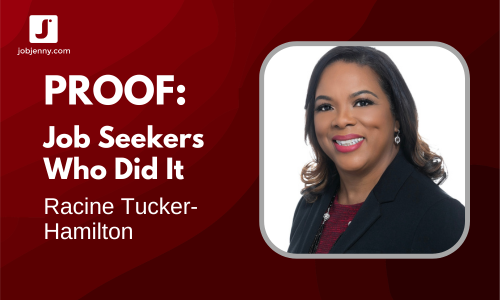4 Ways to Ensure Your Resume Makes it Through "The Black Hole"
An amazing job just popped up online. I mean, like, your dream job. And it's not just your dream job ... It's your dream job that lines up perfectly to your experience. You couldn't have constructed a more perfect job description, not even if you tried.
And so, it goes without saying that you dropped everything to apply for this life-changing opportunity. Right?
You filled in all the blanks on the online application, uploaded your resume and cover letter and, va-voom, hit "SEND."
And then you waited. A day went by. Three days. A week. No response. No acknowledgement.
For the love of God ... Nothing.
After two or three weeks of this nonsense, you begin to question everything. Did you do something wrong? Do they not understand how stinking qualified you are for this? Did they hire someone without ever even considering you? Are you ever going to land a job you actually love??
While you often will never know exactly why you didn't land an interview (for a job that you were more than qualified for), here's a very common reason why you get rejected at the starting line:
Your Resume Didn't Make it Through the ATS
When you apply for jobs via online application, chances are a human is not going to be the first reviewer of your resume. Nope. Instead, it will likely first get dropped into "the resume black hole," or an applicant tracking system (ATS).
The ATS will scan your resume, parse your information into various data fields and then -- working from whatever variables the human who programmed it instructed it to go look for (key words, degrees, years of experience, titles, etc.) -- give you a "match score."
If you match up well, your resume will move on and into the hands of a recruiter or hiring manager. If your match score is low? Done-zo.
So how, other than being a good match in general, can you make sure your resume makes it through this initial review process and into the hands of an actual human being? Here are four simple ways:
1. Forget About Swanky Layout / Formatting
I get it. You want to set yourself apart with a resume that will visually wow potential employers the moment they set eyes on it. And I've seen some breathtakingly cool resume designs on Etsy and other specialized sites. Unfortunately, your stylin' design will not only fail to impress the ATS, it will likely make it nearly impossible for it to read and properly parse your information.
In the worst case, your information plops into the ATS as a garbled mess. You can probably imagine what your match score -- and chance at landing an interview -- at this point.
Do the swanky layout if you wish to, but save that version for instances in which you're emailing it directly to a person, posting to your own website, or handing it over at an interview.
When applying via online application, use a straightforward format.
2. Don't Use Non-Standard Fonts
The ATS is also rather particular about fonts. As in, it knows how to read common PC fonts and will likely struggle with obscure or non-standard fonts. I realize that cool fonts can help your resume look cooler. However, the ATS can't deal with them. And you're not going to feel cool at all if no one calls you for an interview.
Fonts to consider: Arial, Times New Roman, Garamond, Calibri
3. Keep the Section Headers Simple
Once again, you want to make the ATS' job easy when it comes to finding -- and sorting - your information. You can do this by naming your sections common things like "Career Summary" (instead of, "A Little Bit About Me"), "Professional Experience" (instead of, "Cool Places I've Worked"), and so forth.
You most certainly can have a second version with catchier headlines (especially if you work in an industry that values creativity and style), but again, save that one for instances in which you're sending the resume directly to a recruiter or other decision maker.
4. Go With a Reverse Chronological Format (Not Functional)
At this point, I'm guessing you see a theme here -- You need to make the ATS' job easy. Give it a solid shot at finding and sorting out your information. You can do this by using a resume written in reverse chronological format (vs. a functional resume). A reverse chronological resume is one that lists your current or most recent job first, spells out details and accomplishments from that job right underneath, and then lists out the next most recent job. (And so forth).
Many times, especially when a job seeker has a resume gap or is applying for a job in a sector she hasn't worked in for several years, she will construct a functional resume. This is one that top loads skills and key accomplishments all at the front of the resume, without indicating when or where you did or achieved these things.
Don't send one of these babies through the ATS. Your information will go into the system in one big blob, and you'll likely be rejected from consideration.
These are four simple fixes you can make that will help your resume pass through the scanning software, and move on to the actual humans in the hiring process.
And if you're feeling like your resume needs more than "simple fixes" ...
Check out our just-launched Weekend Resume Makeover course. Designed to help anyone construct a professional quality resume (in a weekend or less!), the course will walk you section-by-section through our proven process of constructing a killer resume. We'll also teach you, in more detail, how this crazy game works so that you can strategize to win.
So, if you know you need help and you want to get from start-to-finish without feeling completely tortured, check out the preview and course curriculum.











